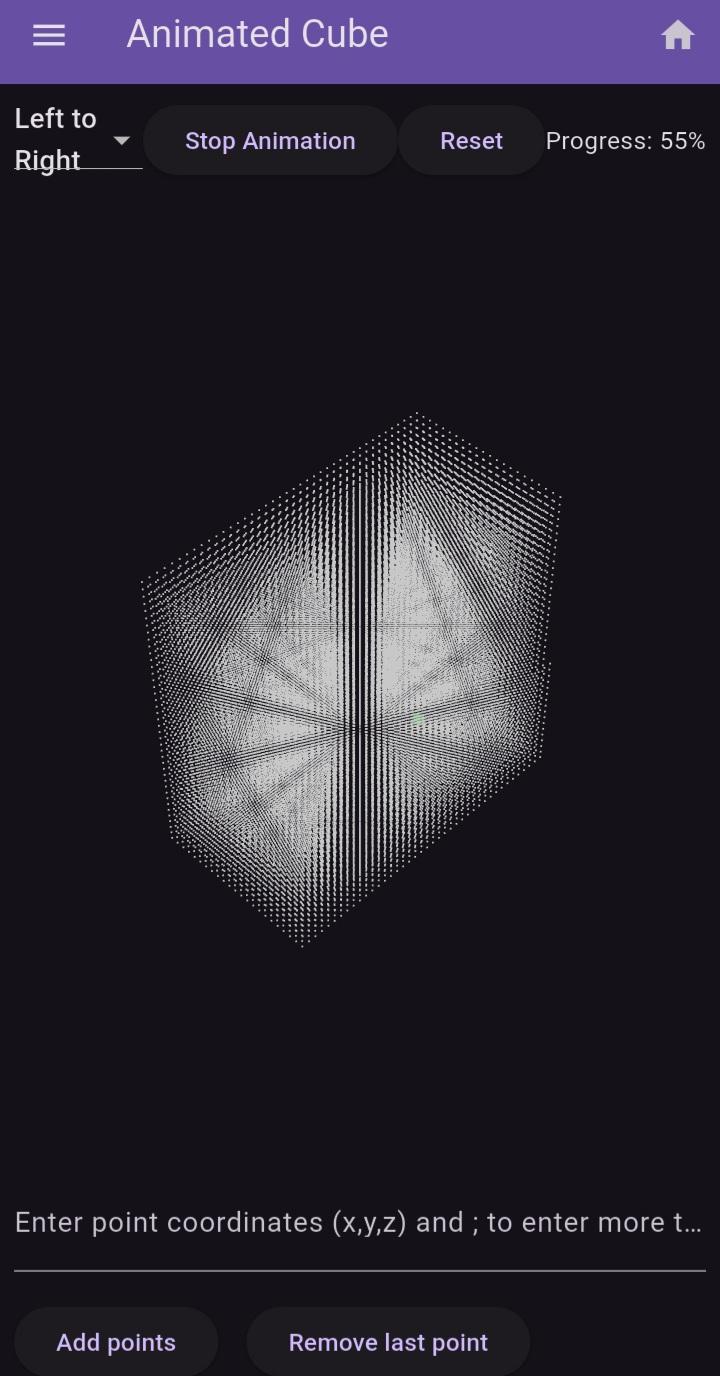Animated Cube
-
Home
-
Animated Cube

Animated Cube

The Cube as a Portal to Higher Dimensions
Introduction
The humble cube, a fundamental shape in our three-dimensional world, serves as a powerful gateway to understanding higher dimensions. While we experience reality in three spatial dimensions (length, width, and height), mathematics and physics suggest that additional dimensions may exist beyond our immediate perception. By exploring the properties of cubes and their behavior in different dimensions, we can develop an intuition for how higher-dimensional spaces might operate.
The Cube in Different Dimensions
0D to 3D: Building Up from the Basics
0D (Point): A single point with no dimensions.
1D (Line): Two points connected, forming a line segment.
2D (Square): Four lines connected at right angles, forming a flat shape.
3D (Cube): Six squares connected, forming a solid object.
At each step, we extend the previous shape into a new dimension. A square is made of lines moved perpendicular to their length, and a cube is made of squares moved perpendicular to their plane.
4D (Tesseract) and Beyond
If we follow the same logic:
A 4D hypercube (tesseract) is made by moving a cube perpendicular to our 3D space.
A 5D hypercube is made by moving a tesseract into a fifth dimension.
We cannot fully visualize these shapes in 3D, but we can study their properties:
A tesseract has 8 cubical faces, just as a cube has 6 square faces.
In n dimensions, a hypercube has 2n faces, each an (n-1)-dimensional cube.
Projections: How Higher Dimensions Appear in 3D
Since we cannot directly see 4D+ objects, we rely on projections, similar to how a 3D cube casts a 2D shadow.
A 3D shadow of a tesseract appears as a smaller cube inside a larger cube, connected by warped edges.
Rotating a tesseract causes its 3D projection to distort in seemingly impossible ways, just as rotating a cube makes its 2D shadow shift.
Slicing: Taking Cross-Sections of Higher Dimensions
Another way to understand higher dimensions is by taking 3D slices of a 4D object.
Just as slicing a cube with a 2D plane can produce squares, triangles, or hexagons, slicing a tesseract with a 3D "hyperplane" can produce cubes, pyramids, or other complex shapes that change over time.
Why Study Higher Dimensions?
Physics (String Theory & Quantum Gravity)
String theory requires 10 or 11 dimensions to mathematically unify forces.
Extra dimensions may be "compactified" (curled up) at tiny scales.
Computer Science & Data Analysis
Machine learning often works in high-dimensional spaces where each feature is a dimension.
Understanding hypercubes helps in optimization and geometry-based algorithms.
Philosophical Implications
Could there be hidden dimensions beyond our perception?
If higher dimensions exist, how would they affect reality?
Thought Experiments to Build Intuition
Flatland Analogy
Imagine 2D beings living on a plane. They cannot perceive "up," just as we struggle to perceive a fourth spatial dimension.
A 3D sphere passing through Flatland would appear as a circle that grows and shrinks. Similarly, a 4D object passing through our space might seem to appear, change shape, and vanish.
The Hypercube Unfolding
A cube can be unfolded into 6 squares in 2D.
A tesseract can be unfolded into 8 cubes in 3D, forming a 3D "net."
Rotation in Higher Dimensions
Rotating a cube along a new axis in 4D would make it seem to morph in impossible ways in 3D.
Conclusion
The cube, a simple and familiar object, serves as a stepping stone to imagining higher dimensions. By studying how dimensions build upon each other—from points to lines, squares, cubes, and beyond—we develop the mathematical and conceptual tools needed to explore realms beyond our everyday experience. Whether for theoretical physics, advanced mathematics, or pure intellectual curiosity, the journey into higher dimensions begins with the cube.
Further Exploration
Read Flatland by Edwin A. Abbott (a classic exploration of dimensions).
Explore interactive 4D projections (e.g., 4D toys, mathematical simulations).
Study linear algebra and tensor mathematics to formalize dimensional concepts.
The cube is not just a shape—it is a key to unlocking the mysteries of the universe's hidden geometry.
Share this service:



